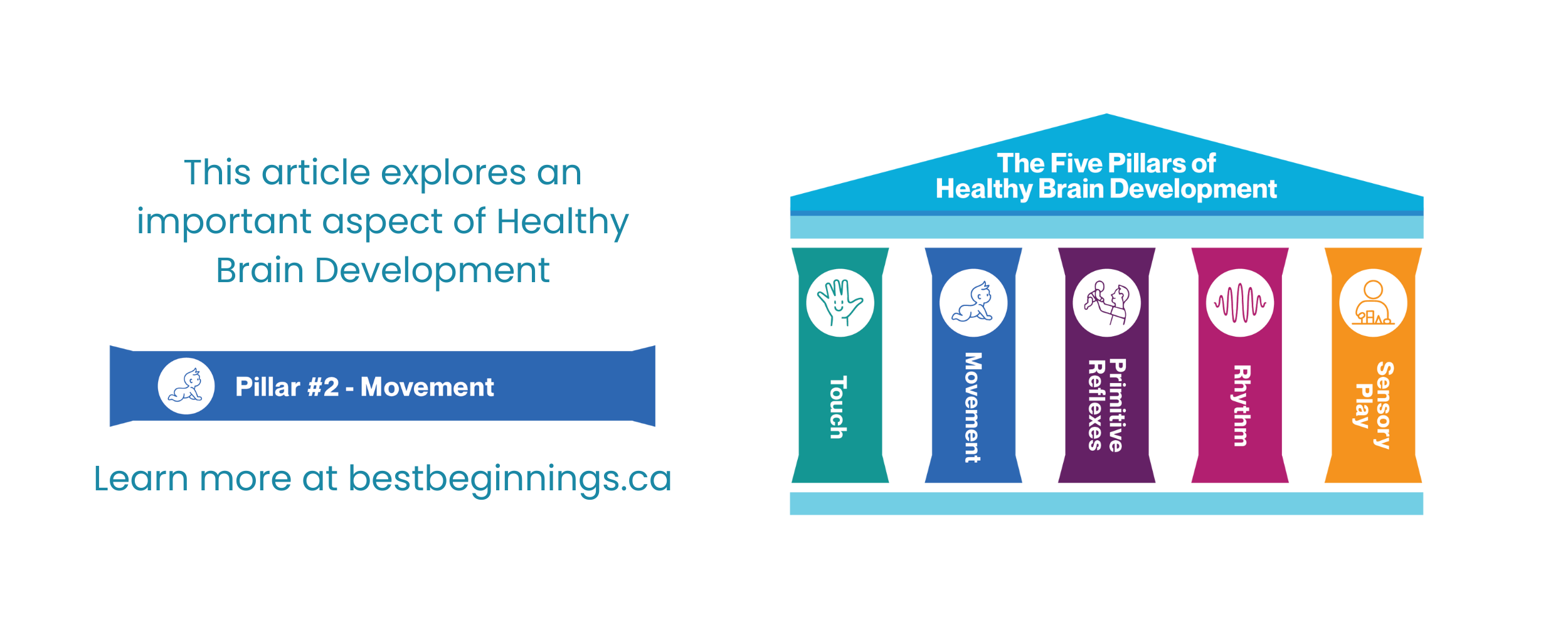Tummy Time Made Easy
Tummy time is one of the simplest and most effective ways to help Baby grow stronger, more coordinated, and ready to explore their world. These short, playful moments on their tummy build strength in Baby’s neck, shoulders, arms, and back—all of which prepare them for crawling, sitting, and reaching.
Although it might sound simple, tummy time is essential for Baby’s brain and body development. During these moments, Baby learns how to lift their head, push up, and shift weight from side to side. These movements strengthen the muscles that support posture and movement, and they help Baby’s brain form important neural connections that support future coordination and balance (1).
When and How to Start Tummy Time
Tummy time can begin soon after birth, as long as Baby is awake and supervised. Start with just a few minutes at a time—two or three short sessions a day is plenty at first. As Baby grows and becomes stronger, you can gradually increase the time. The key is to make it fun, gentle, and positive.
Try placing Baby on your chest while you recline or lay them on a soft blanket on the floor. Get down to their eye level, talk, sing, or gently stroke their back. These simple actions help Baby associate tummy time with comfort and connection. Using small toys or a mirror can also keep them engaged and curious.
Why Tummy Time Matters
When babies spend too much time lying on their backs or in baby seats, the muscles at the front of the body can tighten while those on the back remain underused. This imbalance can make it harder for Baby to develop motor skills such as rolling, crawling, and sitting (2). Tummy time encourages natural movement patterns that strengthen Baby’s back and promote healthy posture.
Tummy time also stimulates Baby’s vestibular and proprioceptive systems—the senses responsible for balance and body awareness. Every time Baby lifts their head, shifts their weight, or reaches for a toy, their brain receives valuable feedback about movement and position (3). These sensory experiences are the building blocks of coordination, spatial awareness, and even later academic learning.
Helping Baby Enjoy Tummy Time
Some babies fuss or cry when first placed on their tummy, and that’s okay. You can help Baby adjust by starting slowly and offering plenty of encouragement. Short, frequent sessions—just one or two minutes at first—can be more effective than one long session. As Baby becomes stronger, they’ll naturally start to enjoy exploring the world from this new perspective.
Remember, tummy time doesn’t always have to happen on the floor. Try it on your chest, across your lap, or even on a firm bed while you stay close. These gentle variations give Baby a sense of safety and comfort while still engaging their muscles and reflexes.
When you include massage in your tummy time routine, you’re adding even more benefits. Gentle strokes along Baby’s back, arms, and legs before or after tummy time help relax muscles, improve circulation, and make the experience soothing and enjoyable (4).
Tummy Time as Bonding Time
Beyond the physical benefits, tummy time strengthens the emotional connection between you and Baby. Every smile, encouraging word, and gentle touch builds Baby’s sense of trust and security. Over time, these shared moments nurture confidence and resilience—skills that will carry Baby through all stages of growth.
By making tummy time a regular part of your daily routine, you’re giving Baby a strong foundation for future movement, balance, and coordination. Most of all, you’re showing Baby that learning through play can be joyful, safe, and full of love.
References
Lobo, M. A., & Galloway, J. C. (2012). Enhanced handling and positioning in early infancy advances development throughout the first year. Child Development, 83(4), 1290–1302.
Pin, T., Eldridge, B., & Galea, M. P. (2007). A review of the effects of sleep position, play position, and equipment use on motor development in infants. Developmental Medicine & Child Neurology, 49(11), 858–867.
Case-Smith, J., & O’Brien, J. C. (2015). Occupational therapy for children and adolescents (7th ed.). Elsevier.
Field, T. (2014). Massage therapy research review. Complementary Therapies in Clinical Practice, 20(4), 224–229.



